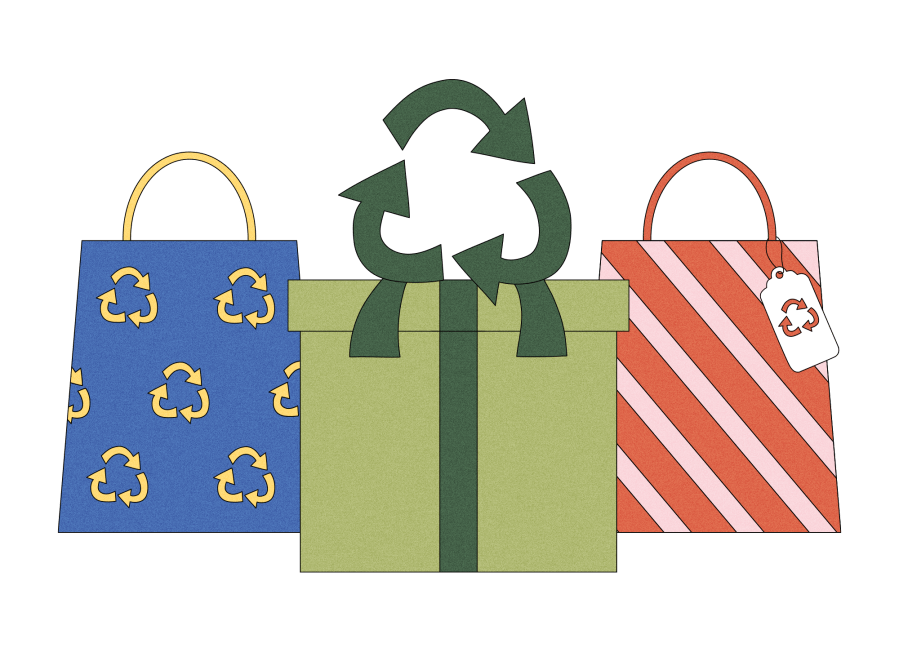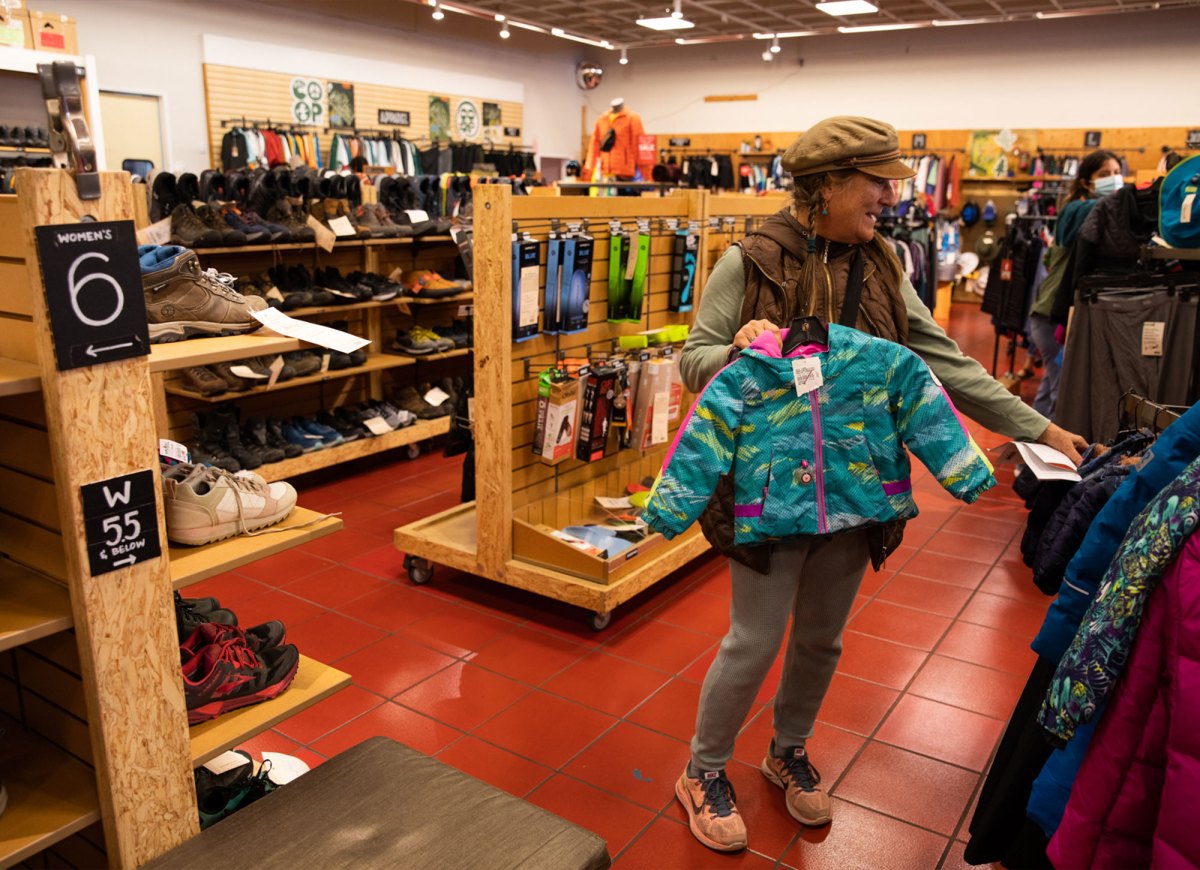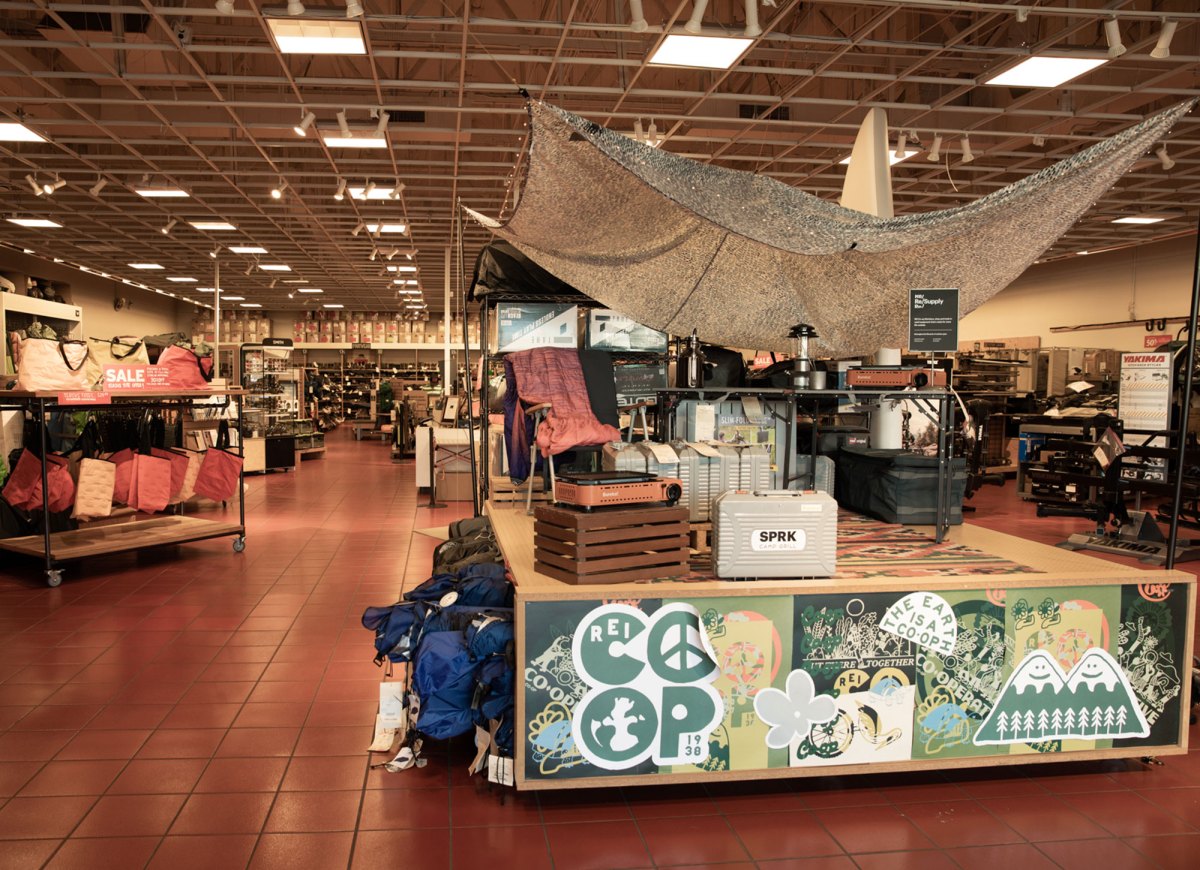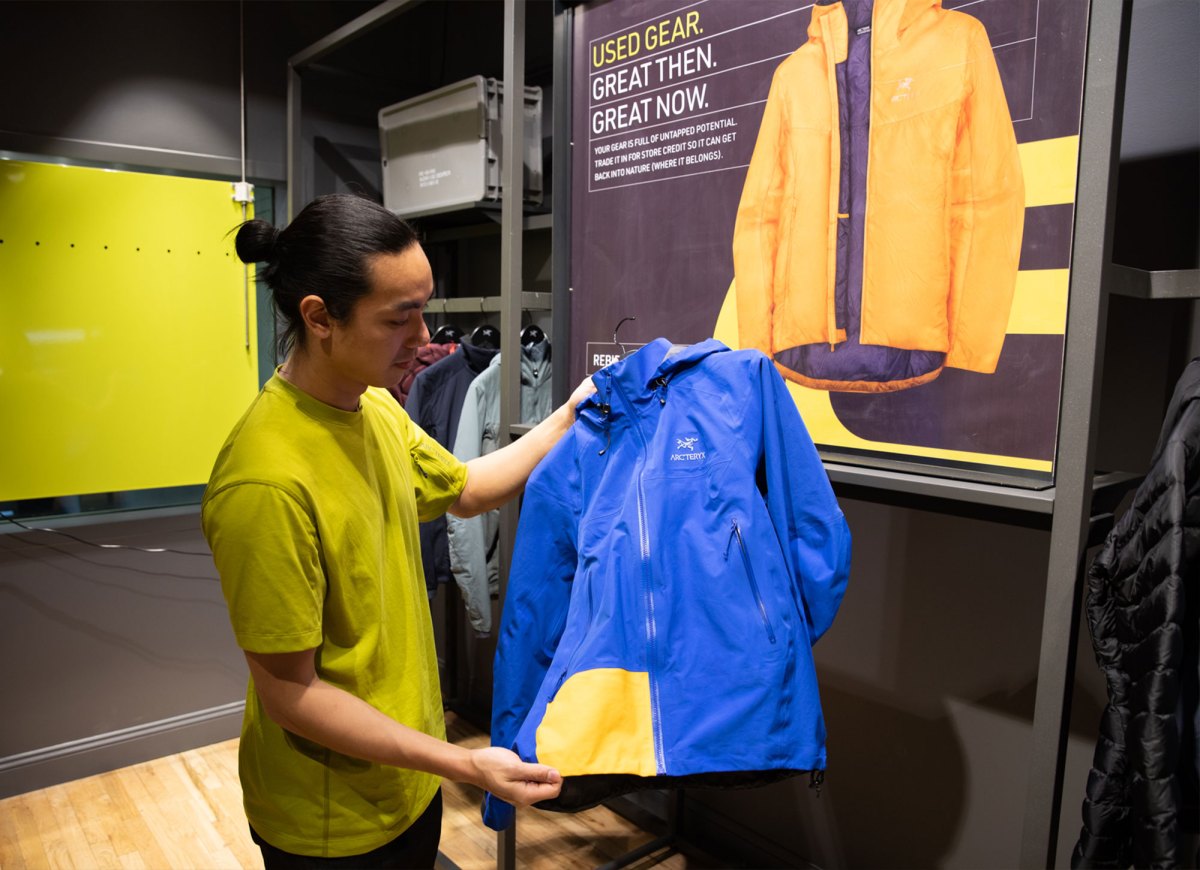
The vision
It’s become a running joke in your family that you’re going to return any gift your brother gets you. Bless him, he just doesn’t understand your aesthetic, or your approach to stuff.
Hence, your jaw-drop when you unwrap this gorgeous pair of distressed, patch-covered, wide-legged jeans. You recognize the brand but they look so … unique.
“They’re refurbished,” he explains. “I thought it’d be funny, you know. You always return my presents, and this one has already been returned,” he chuckles.
You’re almost speechless. “Actually, I … love them.”
Equally shocked, he starts to smile. “Did I just win Christmas??”
— a drabble by Claire Elise Thompson

The spotlight
Happy Thanksgiving week, dear readers! Exciting news: We’ve chosen a book for our next Looking Forward book club! Thanks to all who voted on the options. Read on for the chosen title and to RSVP for the gathering (January 18).
And, as holiday gifting season is nigh upon us, we thought it’d be a good time to dedicate a newsletter to the rise of resale — courtesy of Fix’s new staff writer, Gabriela Aoun.

When I met Theresa Berg last week at an REI store in Manhattan Beach, California, she was carefully studying a tiny pink snow coat.
Berg, 63, was shopping for some warm clothes for her grandkids, who were about to visit her from Hawaii. She decided she couldn’t pass up the coat. “It’s an amazing savings,” she said, which it was. The coat was discounted 70 percent, from $120 to $34.99.
That’s because it had been worn before.
We were at the REI Re/Supply store, one of only two brick-and-mortar REI locations in the United States dedicated exclusively to selling used items. Re/Supply sells products that customers have returned or traded in.

Theresa Berg shops for winter clothes for her grandchildren at the REI Re/Supply store in Manhattan Beach, California. Gabriela Aoun
This weekend, frenzied promotional sales like Black Friday and Cyber Monday will kickstart another holiday shopping season. Giving gifts to people we care about is a ritual and can bring a lot of joy. But for those of us who try to be mindful of the environmental impact of overconsumption, gifting can also be tricky. How can we keep traditions alive without contributing to planet-damaging resource extraction and waste?
The good news is that in the last year, a remarkable thing has happened in retail. More brands than ever before have entered the resale space, meaning they’ve started to sell their own used goods online and even in some of their physical stores. I wrote about this for Grist earlier this year, after the outdoor apparel brand Arc’teryx opened a shop in SoHo, New York City, in which half of the space is dedicated to repair and resale. Other apparel brands like Lululemon, Timberland, and Allbirds have also joined resale veterans like Levi’s, Patagonia, and Eileen Fisher in adopting more circular business models — ones that separate making money from producing with new resources.
It’s not just clothing companies peddling their own used wares. The gear company Peak Design has set up an online marketplace for customers to sell their secondhand travel bags and camera accessories themselves. And Fellow Products, a company that makes luxury coffee equipment, is offering limited runs of its refurbished electric kettles and coffee grinders (which have been swiftly selling out) in its Rebrew store.
That’s going to make it a lot easier for shoppers this holiday season to find secondhand gifts that are almost as good — if not as good — as new. And since buying a secondhand item results in about half the CO₂ emissions of buying a new one, more resale options will mean more opportunities to lessen the impact of our shopping.
Upgrading the secondhand experience

The Re/Supply store in Manhattan Beach is one of only two REI stores that exclusively sells pre-owned gear. Gabriela Aoun
REI had been selling used gear for over six decades through its popular “garage sales,” near-monthly parking lot events where it sold returned items at a large discount. In 2019, REI began letting customers trade in their outdoor gear for REI gift cards, and then selling the gear on its website. The next year, REI suspended its garage sales. It put used gear into its retail stores and opened Re/Supply stores in Manhattan Beach and Conshohocken, Pennsylvania. “This is a better experience than waiting in line at a once-per-month garage sale event,” says Jeremy Castle, manager of the Manhattan Beach store. “People actually have the time to shop, and the experience is more comfortable.”
This year, REI is on track to sell more than 1 million used products, according to Divisional Vice President of Circular Commerce Ken Voeller, who says that will help the company meet its goal of reducing CO₂ emissions by 55 percent from 2019 levels by 2030. Voeller predicts that by then, resale will be a billion dollar business for REI.
“Over the longer term, we see less and less of a distinction between our used-product business and our new-product business,” says Voeller. “We’re trying to get the right product to the right customer at the right time, and we would love if that were a used product.”
To get customers to see used and new shopping as interchangeable, brands are creating secondhand shopping spaces that mimic the typical retail experience. The Levi’s SecondHand online store has all the same search functions as its main website, allowing shoppers to filter by color, fit, and even whether the jeans are stretchy. On my visit to the Arc’teryx store last Black Friday, I was surprised to see racks of used jackets displayed with as much care and curation as new products.
In January, the boot company Timberland launched its Timberloop program, in which customers can mail in or drop off their used boots in exchange for 20 percent off a future purchase. The shoes are cleaned and refurbished before being sold on the Timberloop site. “They are essentially good as new,” says Atlanta McIlwraith, Timberland’s director of social impact and innovation. “There’s a high attention to quality.” Shoes that aren’t in good enough condition to be sold are disassembled; parts like zippers and laces that can be used for future refurbishments are kept, and the rest go into various channels of recycling.
Timberland hopes investing in resale also helps them serve more customers. “It’s a great way to get a really durable, high-end product at a bargain,” says McIlwraith. The Timberloop website goes so far as to grade boots’ condition as “Good,” “Better,” and “Best,” and to price them accordingly, allowing customers with limited budgets to find something that works for them, and giving well-worn shoes that might otherwise go into the waste stream another life.
Making resale more than an afterthought

Sales associate Johnson Nguyen holds a refurbished coat at Arc’teryx’s ReBird Service Center in New York City last February. Gabriela Aoun
Preventing usable products from becoming waste and reducing the need to produce new items are what make resale programs a powerful tool in reducing the environmental impact of retail. In 2018, the fashion industry alone produced 4 percent of global greenhouse gas emissions, more than France, Germany, and the U.K. combined. But in a 2021 report, the Ellen MacArthur Foundation predicted that circular fashion — including resale, rental, repair, and remaking — has the potential to make up almost a quarter of the fashion industry by 2030, resulting in an annual reduction of around 340 million tons of CO₂ equivalent.
The study’s authors stressed that whether resale actually lowers retail’s impact will depend on whether brands that adopt resale programs replace linear business models with circular ones, or merely supplement their new production with token gestures of circularity. In other words, it only makes a difference if brands also start to sell less new stuff.
How seriously companies take circularity may in large part depend on what customers signal they want. “We’re going to be eagerly watching to see what happens this holiday season,” says McIlwraith, “with the hope consumers will opt for this.”
Before I left the Re/Supply store, I passed Berg again. She was carrying two snow jackets for her grandkids and was now perusing the women’s section. Her face had a wry smile. “Now let’s see if I can find something for Grandma,” she said.
— Gabriela Aoun
More exposure
- Read: two classic Ask Umbra guides on dressing for the planet and rethinking some key aspects of the holidays (Grist)
- Read: an essay on the virtues of regifting (Gizmodo)
- Read: a whole-ass newsletter about getting rid of tape in your gift wrapping endeavors (one5c)
- Watch: a cute animated video explaining the basics of the circular economy (Ellen MacArthur Foundation)
On our horizon
We’ve got our pick for the next Looking Forward book club! It’s going to be (drumroll, please) … The Ministry for the Future, by Kim Stanley Robinson.
I can’t tell you all how many recommendations I’ve received — including from many of you here — for this whopping 560-page tome. I, for one, can’t wait to cozy up and read it over the upcoming holidays. Like last time, we’ll choose a few chapters or themes to focus on — and of course, all are welcome, whether you’ve read the full book or not (or whether you read it two years ago when it was hot off the presses).
We will gather virtually to discuss this book on Wednesday, January 18, at 6 p.m. ET. RSVP here!
And we will once again be giving away five copies of the book to our eager readers! Fill out the RSVP form by December 8 if you’d like to be entered in the giveaway. (We’ll reach out to the five winners on Friday, December 9.)



